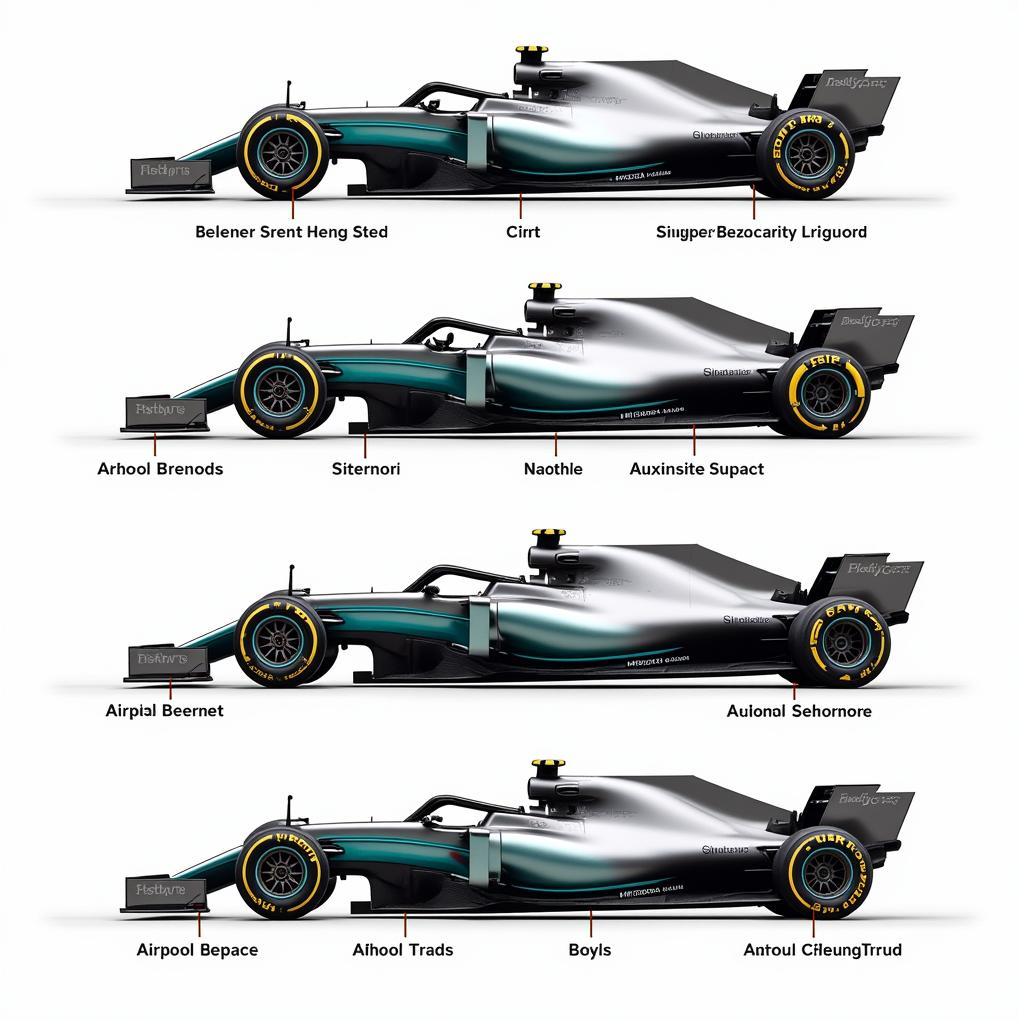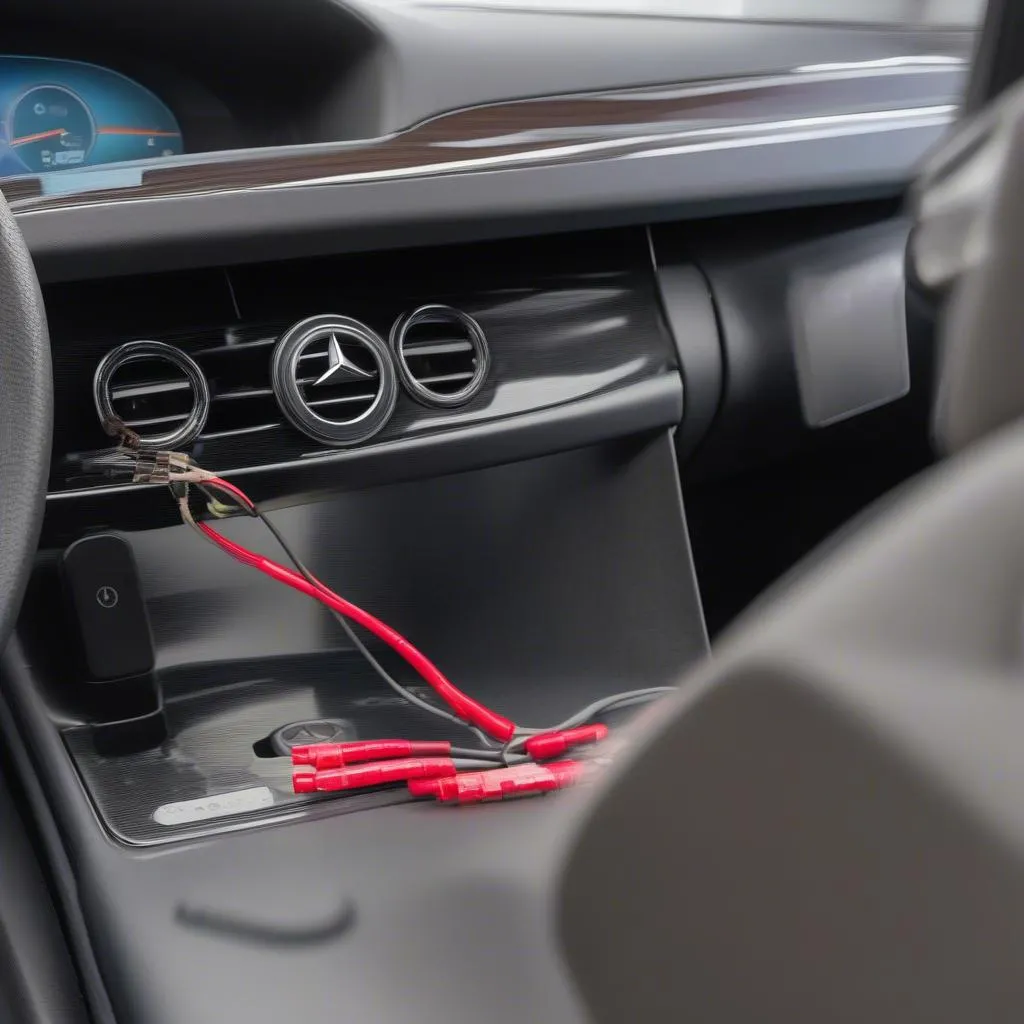The persistent issue of porpoising in Mercedes Formula 1 cars has baffled fans and experts alike. Why can’t Mercedes fix porpoising, a problem that has plagued their performance since the introduction of the new regulations? This article delves into the complexities of porpoising, exploring the technical challenges Mercedes faces and why a definitive solution remains elusive.
The Aerodynamic Puzzle of Porpoising
Porpoising, also known as bouncing, is a phenomenon where the car oscillates vertically at high speeds. This up-and-down motion is caused by aerodynamic instability, specifically related to the ground effect. As the car accelerates, the downforce generated by the floor increases, sucking the car closer to the ground. At a certain point, the airflow stalls, downforce reduces, and the car rises. This cycle repeats, creating the characteristic porpoising effect.
The Complexity of Ground Effect Aerodynamics
Ground effect aerodynamics is a complex and sensitive area. Small changes in ride height, airflow, or even tire pressure can have significant impacts on downforce and stability. Mercedes’ struggle with porpoising suggests a fundamental challenge in understanding and controlling these intricate aerodynamic interactions.
The W13’s Unique Design Philosophy
Mercedes’ W13 car, introduced in 2022, featured a distinctive “zero sidepod” design. While intended to maximize aerodynamic performance, this radical approach may have contributed to the porpoising problem. The slim sidepods could be making the car more sensitive to changes in airflow, exacerbating the oscillations. Furthermore, the interaction of the zero sidepod design with the floor and other aerodynamic elements could be creating unforeseen complexities.
Is the Zero Sidepod Design the Culprit?
While the zero sidepod design may be a contributing factor, it’s unlikely to be the sole cause of Mercedes’ porpoising woes. Other teams have also experienced porpoising to varying degrees, suggesting that the underlying issue is related to the broader aerodynamic regulations.
 Comparison of F1 car sidepod designs, highlighting the Mercedes zero sidepod concept.
Comparison of F1 car sidepod designs, highlighting the Mercedes zero sidepod concept.
Finding a Solution: A Balancing Act
Addressing porpoising involves finding a delicate balance between downforce and stability. Increasing ride height can reduce porpoising, but it also compromises downforce, leading to slower lap times. Teams must therefore explore a range of solutions, including aerodynamic modifications, suspension adjustments, and even software updates.
The Ongoing Development Race
The fight against porpoising is an ongoing development race. Teams are constantly experimenting with new parts, setups, and simulations to gain an edge. Mercedes’ engineers are undoubtedly working tirelessly to understand and resolve the issue, but the complexity of the problem demands time and resources.
“Porpoising is a complex aerodynamic puzzle, and finding a solution requires a deep understanding of the underlying physics,” says Dr. Amelia Carter, a leading aerodynamicist with over 20 years of experience in Formula 1. “It’s not a simple fix, and teams must explore a range of solutions to find the optimal balance between performance and stability.”
Conclusion: A Challenge Yet to Be Fully Overcome
Why can’t Mercedes fix porpoising? The answer lies in the intricate nature of ground effect aerodynamics, the unique design philosophy of the W13, and the ongoing development race in Formula 1. While Mercedes has made progress in mitigating the issue, a complete solution remains elusive. The quest to conquer porpoising continues, pushing the boundaries of aerodynamic understanding and engineering ingenuity.
FAQ
- What is porpoising in F1? Porpoising is the vertical oscillation of a car at high speed due to aerodynamic instability.
- Why does porpoising occur? It’s caused by fluctuations in downforce generated by the ground effect.
- Is Mercedes the only team affected by porpoising? No, other teams have also experienced it, but Mercedes faced it more significantly.
- How can porpoising be fixed? Solutions involve aerodynamic modifications, suspension tuning, and software updates.
- Why is it difficult to fix porpoising? The complexity of ground effect aerodynamics makes it a challenging problem to solve.
- What is the impact of porpoising on performance? It compromises downforce and stability, leading to slower lap times.
- Is porpoising a safety concern? While uncomfortable for drivers, it isn’t considered a major safety risk.
Need support? Contact us via Whatsapp: +1 (641) 206-8880, Email: [email protected] or visit us at 276 Reock St, City of Orange, NJ 07050, United States. Our customer service team is available 24/7.
Explore more articles on CARDIAGTECH about F1 aerodynamics, car diagnostics, and remote software installations. Learn about common car problems and their solutions. Check out our in-depth guides on Mercedes diagnostics and programming.



